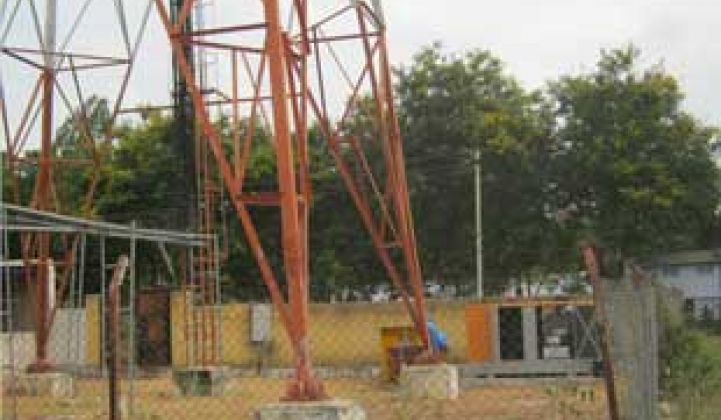There is a clean energy revolution afoot in India. This revolution, mandated by the government, is not about increasing the reliability of the country’s faltering electrical grid -- or providing power to the millions who live without it.
Instead, the federal mandate is all about the energy source for cell-phone base stations. India, the world’s second-largest mobile market after China, has more than 400,000 base stations. By 2020, 75 percent of rural base stations and 33 percent of urban and suburban towers will need to run on renewable energy. The directive comes as diesel prices, heavily subsidized by the government, are rising and as the country looks for ways to address carbon emissions.
Solar has been the winner so far, but it’s still early days. One company, NextGen, has developed bio-compressed natural gas digesters that are gaining ground and could power not only the cell networks, but also parts of the surrounding villages in rural locations. The three-year-old company, started by young engineers that met at the Birla Institute of Technology and Science, has been bootstrapping its bio-CNG operations with consulting, and has also raised some funding.
Startup NextGen has been chosen to provide energy for 500 towers and expects to build 1,000 digesters in the next two years, according to Abhishek Humbad, co-founder of NextGen. The company is working with Mahindra & Mahindra, one of India’s largest generator providers to the telecom industry, to provide the technology to the base stations.
“Fuel in India has reached a big inflection point,” said Humbad. The cost of diesel, which powers most base stations some or all of the time in India, has tripled in the past twelve years. It is expected only to increase in coming years.
Because NextGen’s technology is fully developed and manufactured in India, it is about one-tenth of the cost of similar digesters made in Europe, said Humbad. The unique bacteria being used to break down the organic material are specifically conducive to India and local conditions.
The digester is not optimized for any feedstock (which slightly lowers the output rather than fine-tuning it for a specific type of material) but the economics are still cheaper than commercial gas in India. The anaerobic digester can take more than 900 types of agricultural waste, which does not compete with food sources. Humbad said the economics are also boosted by the production of biofertilizer, a byproduct of the digester.
“We want to become the largest producer of compressed natural gas in India,” Humbad told a group of journalists at SAP India’s labs. Not only is bio-CNG already cheaper than diesel, according to Humbad, but it also allows for 100 percent of the water in the process to be recycled. He noted that the company is taking advantage of any subsidies available, but even without any subsidies, the technology is less expensive than diesel, which continues to rise in price.
The company is focused on the off-grid locations, because not only can the generators run towers, but the excess power produced could also be used for neighborhood villages with simple microgrids. The Tower and Infrastructure Providers Association (TAIPA) has called for a pilot to work with renewable energy providers to create partnerships where the telecoms would buy energy from the renewable companies to power their towers to ensure a certain amount of revenue. The rest of the energy could then be sold to the neighboring area.
For NextGen, power is just one path to market. Besides fertilizer, the young company is also looking at CNG for vehicles. “We’re not just generating power,” said Humbad, who thinks his company could scale to $50 million in revenues in the next two years. “We’re generating fuel.”



